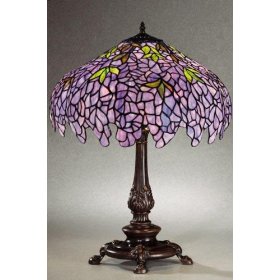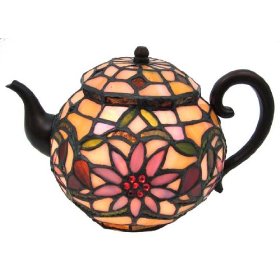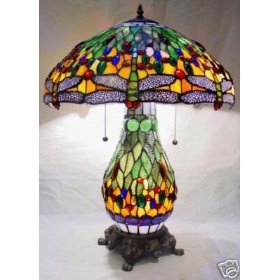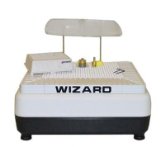The cost for a low end grinder starts around $100 and better quality ones with more options will be in the $200 or more range. So for many this is a fairly big decision to make. The truth of the matter is that whether you get a grinder or not will probably determine if you actually end up making some excellent projects and decide to continue working with glass or not.
Many people see a magnificent stained glass lamp, or marvel at the elegance of a tasteful stained glass window as an accent in a home, and think that if they learned about making stained glass themselves that they would be able to create something at least nearly as nice for their own home.
When you check into this idea you find that the process of making stained glass lamps or windows really isn’t a complicated matter. Only a very few basic tools are required. And for many years in the past there was no such thing as a powered stained glass grinder.
So a new hobbyist may think, “The artisans who made all the great stained glass windows in the cathedrals in Europe or the original Tiffany lamp craftsmen didn’t have an electric powered grinder, why would I need one?” And they go online and get one of the stained glass kits that include the very basic tools but do not include a grinder. Then they start their first project and either find that they can barely get it put together if they are using lead came, or that they are done before they start if they were trying their first project using foil.
While there were no electric grinders in the past, the new stained glass crafter will quickly find that after cutting the glass, the edges are sharp. And that when glass breaks it doesn’t break in a perfectly straight line up and down on the edge. Think about breaking a piece of peanut brittle. The broken edge is sharp at either the top or the bottom and is always slanted.
And he will also find that the glass often doesn’t break exactly along the score line he made so it will be a little bit out of shape. He will try rescoring it and nibbling away with the pliers thereby just creating more sharp and variously slanted edges on the glass.
If he is making a lead came project, the channel in the came will allow some irregularities to be covered up, but if his idea was to start with a foil project he is done before he starts. So he has two choices, either learn to grind and smooth the edges by hand using hand held grinding stones and emery sanding paper or go online and order an electric grinder.
You need a stained glass grinder to smooth the edges of the glass after it is cut and to roughen the edge if you are doing foil to allow it to adhere well. And the main and sweetest advantage is that it allows you to shape your piece to the exact size to fit your pattern after the glass is cut. Doing this by hand is tedious and extremely time consuming.
It can be said that the availability of the reasonably priced electric home use stained glass grinder is the main thing that has allowed making your own stained glass lamps and windows explode as a hobby. What used to take hours can be done in minutes. You don’t need to be a full time craftsman now days to make an exquisite stained glass lamp or window. If you debating whether or not to take the plunge into this hobby get one of the stained glass kits that include a grinder. You’ll be glad you did.
Here is a link to a minute and a half long YouTube video showing a stained glass grinder in use:






